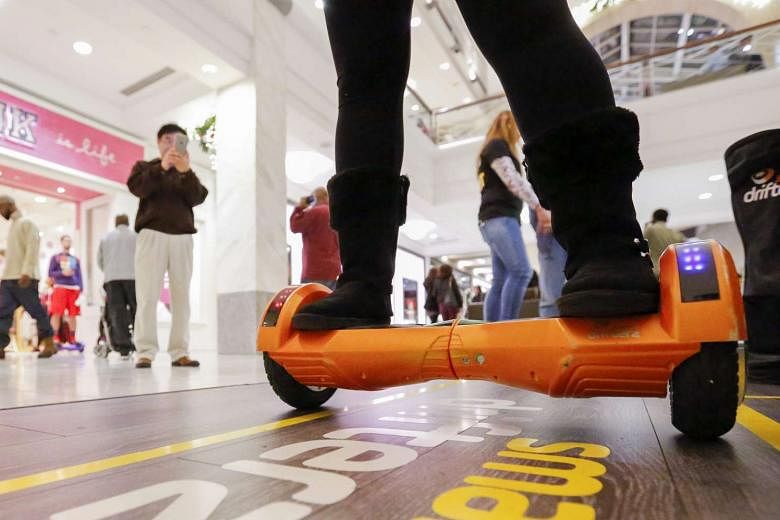GENEVA (REUTERS) - Hoverboards may be on many people's Christmas lists but they are presenting a conundrum for airlines, which are mulling the best way to transport the popular devices that could present a fire risk.
Hoverboards do not in fact hover, but are two-wheeled devices also known as self-balancing scooters or swegways. They have prompted a host of warnings from authorities, and not just because people may fall off them.
Earlier this year, police in Britain warned people it was illegal to ride the devices on both public roads and pavements, meaning people must stick to their own private land to try them.
There have also been reports of hoverboards catching fire, most recently at a mall in Washington state in the United States.
Earlier this month, Britain's National Trading Standards said 88 per cent of 17,000 self-balancing scooters examined at UK entry points for inspections were deemed to be unsafe, with an increased risk of overheating, exploding or catching fire.
Airlines are now considering the best course of action to take when transporting the devices, which typically use lithium ion batteries.
The International Air Transport Association (Iata) has recommended that self-balancing scooters be carried only in cabin baggage, rather than in the hold, but it remains up to each airline to decide their exact policy.
"Each airline has to make a risk-based analysis to decide if these items are to be transported or not, what mitigating measures are to be applied to permit carriage of those items," Gilberto Lopez Meyer, senior vice-president for safety and flight operations at Iata, said on Thursday.
Iata says the devices should be classed as personal electronic devices and says factors to be taken into consideration include the size of the lithium ion battery.
"It's an ongoing discussion," Lopez Meyer said at an Iata media event in Geneva.
The air industry has prior experience with the problem of transporting consignments of lithium ion batteries, which are used in everything from mobile phones to children's toys.
Under a new proposal from the UN aviation safety arm ICAO, that could be approved next year. When lithium ion batteries are transported as cargo, they should be no more than 30 per cent charged in order to reduce the risk of fire.

